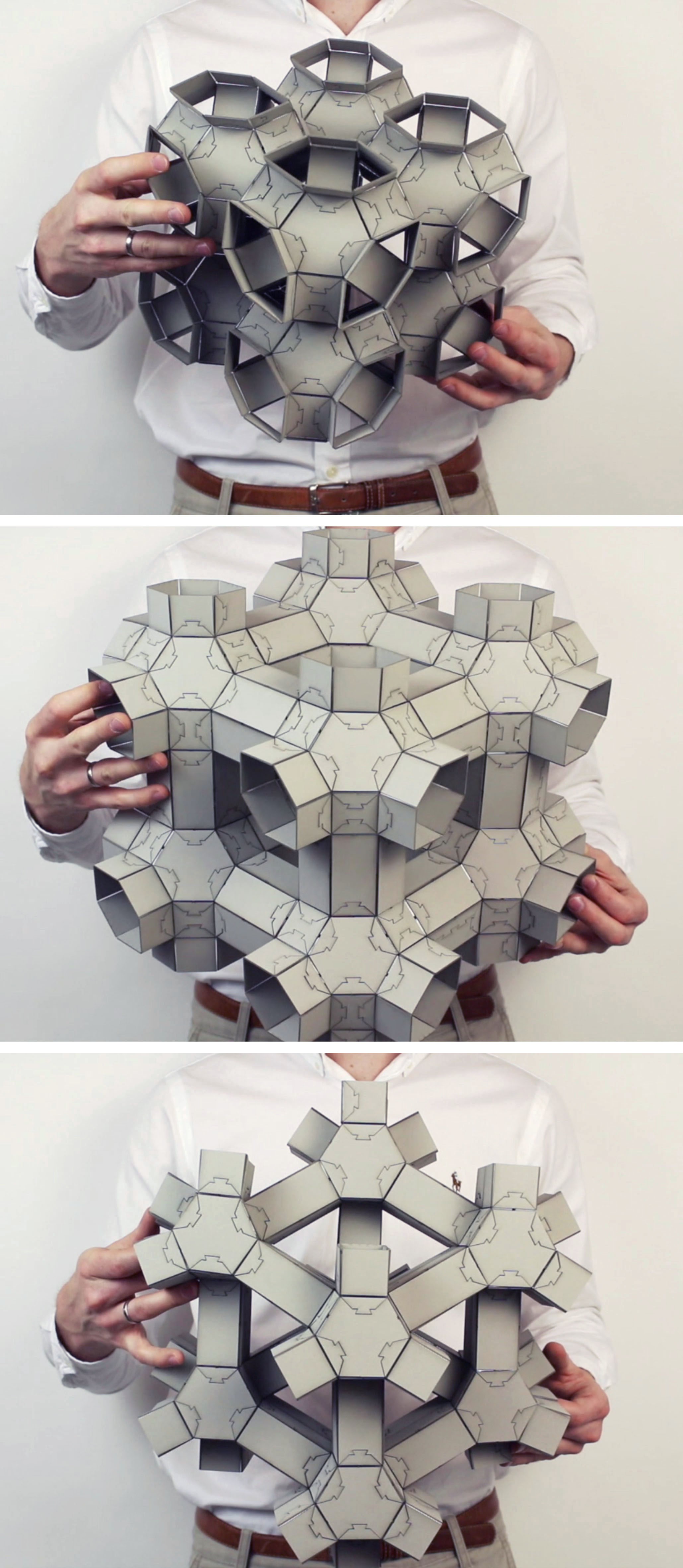Advances in fabrication technologies are enabling the production of architected materials with unprecedented properties. While most of these materials are characterized by a fixed geometry, an intriguing avenue is to incorporate internal mechanisms capable of reconfiguring their spatial architecture, therefore enabling tunable functionality. Inspired by the structural diversity and foldability of the prismatic geometries that can be constructed using the snapology origami-technique, here we introduce a robust design strategy based on space-filling polyhedra to create 3D reconfigurable materials comprising a periodic assembly of rigid plates and elastic hinges. Guided by numerical analysis and physical prototypes, we systematically explore the mobility of the designed structures and identify a wide range of qualitatively different deformations and internal rearrangements. Given that the underlying principles are scale-independent, our strategy can be applied to design the next generation of reconfigurable structures and materials, ranging from transformable meter-scale architectures to nanoscale tunable photonic systems.
Keywords: Metamaterials, architected materials, origami, reconfigurable, multifunctional.
References:
- Overvelde, J.T.B., Weaver, J., Hoberman, C., Bertoldi, K. (2017) Rational Design of Reconfigurable Prismatic Architected Materials, Nature, 541, 347-352.
- Overvelde, J.T.B., de Jong, T.A., Shevchenko, Y., Becerra, S.A., Whitesides, G. M., Weaver, J., Hoberman, C., Bertoldi, K. (2016). A three-dimensional actuated origami-inspired transformable metamaterial with multiple degrees of freedom. Nature Communications, 7, 10929.


